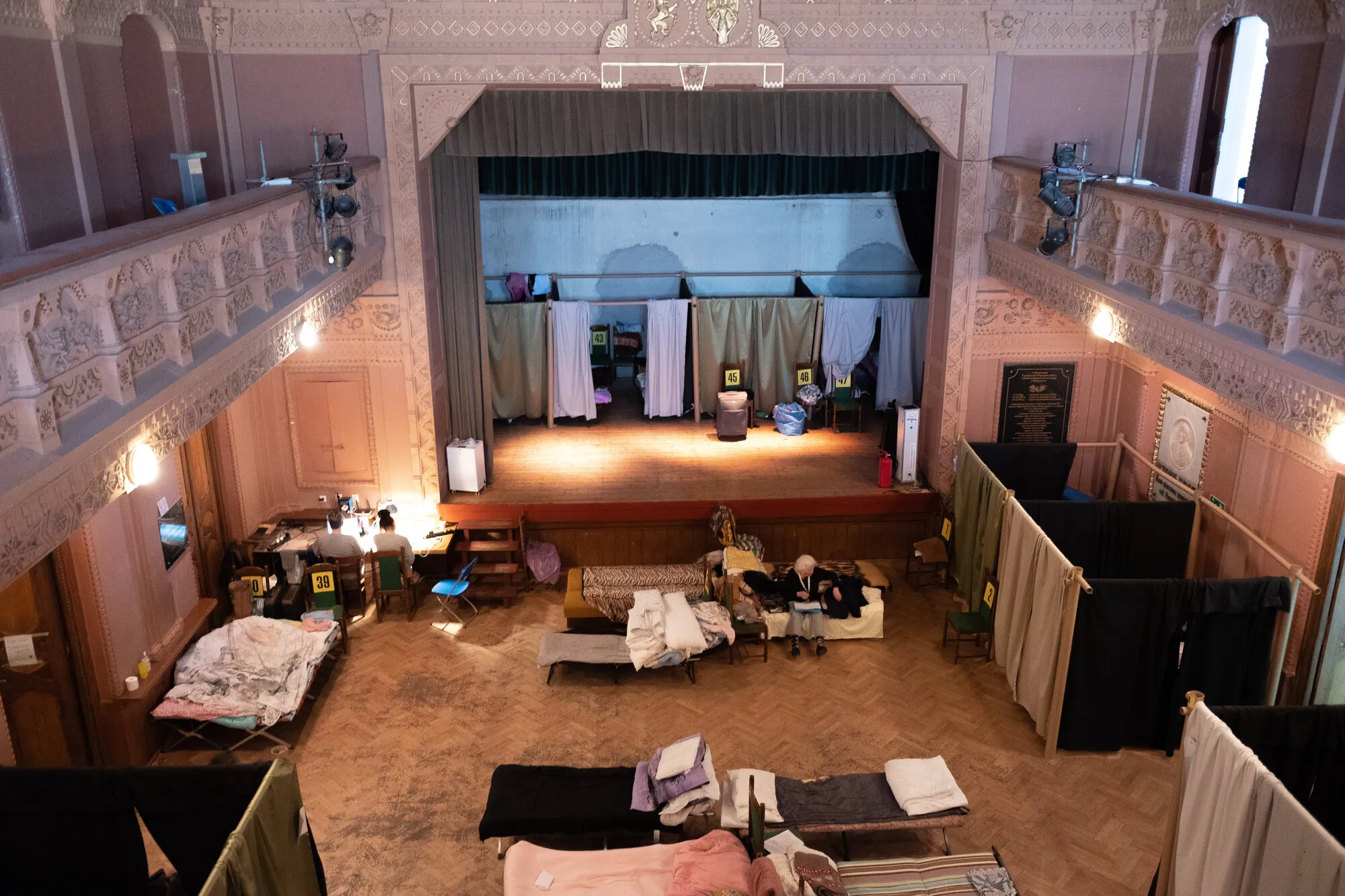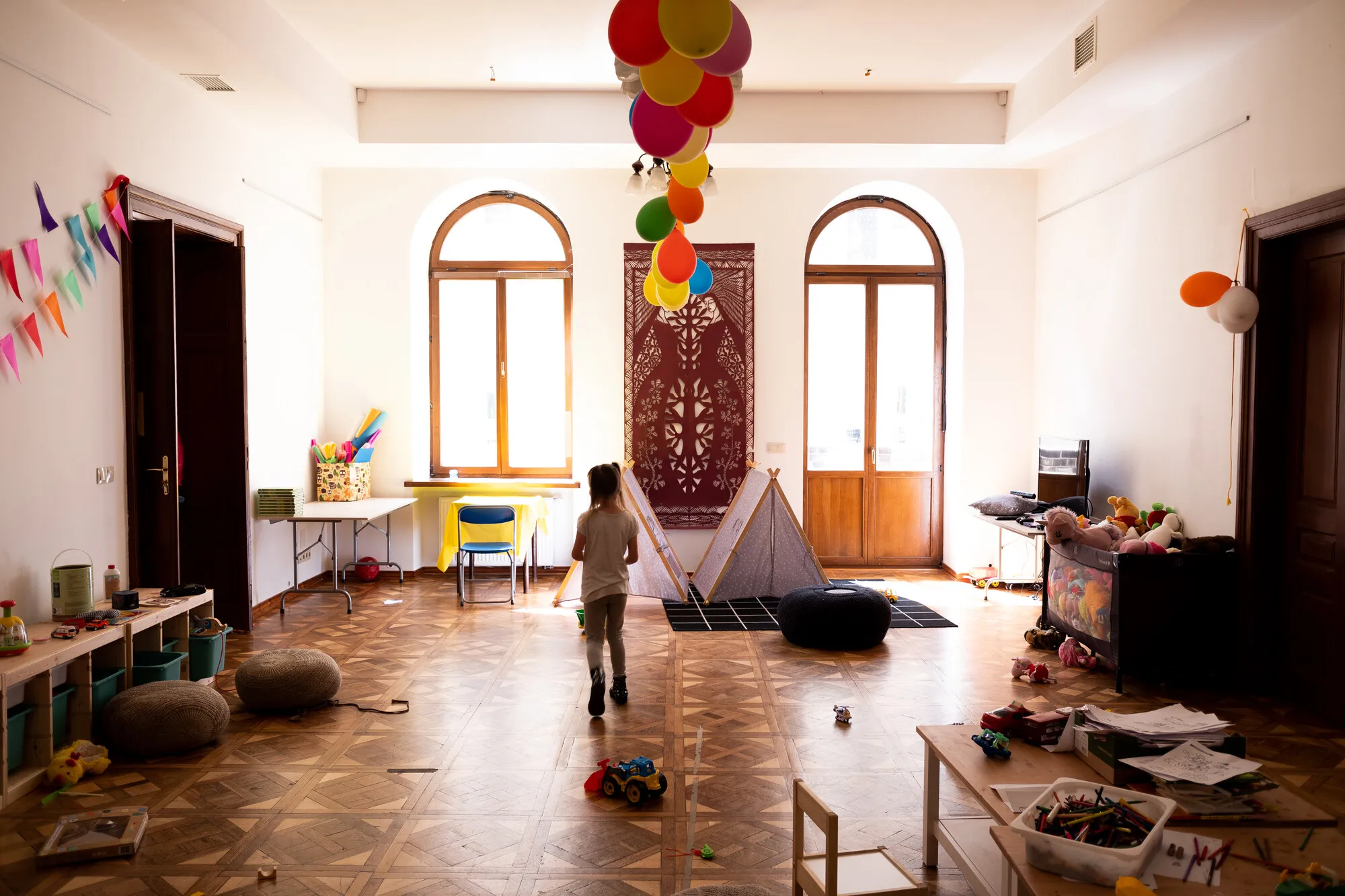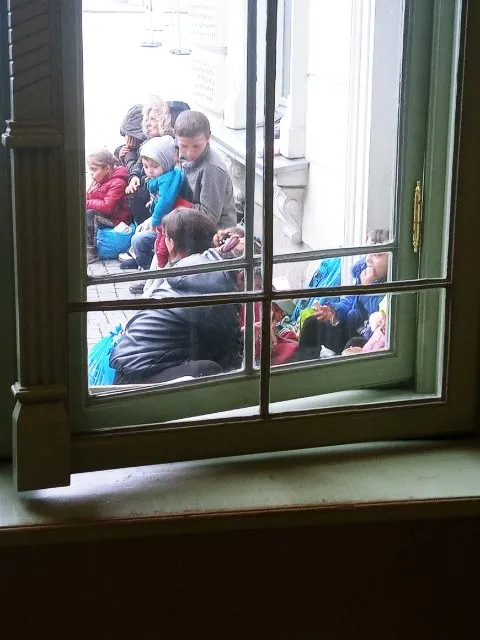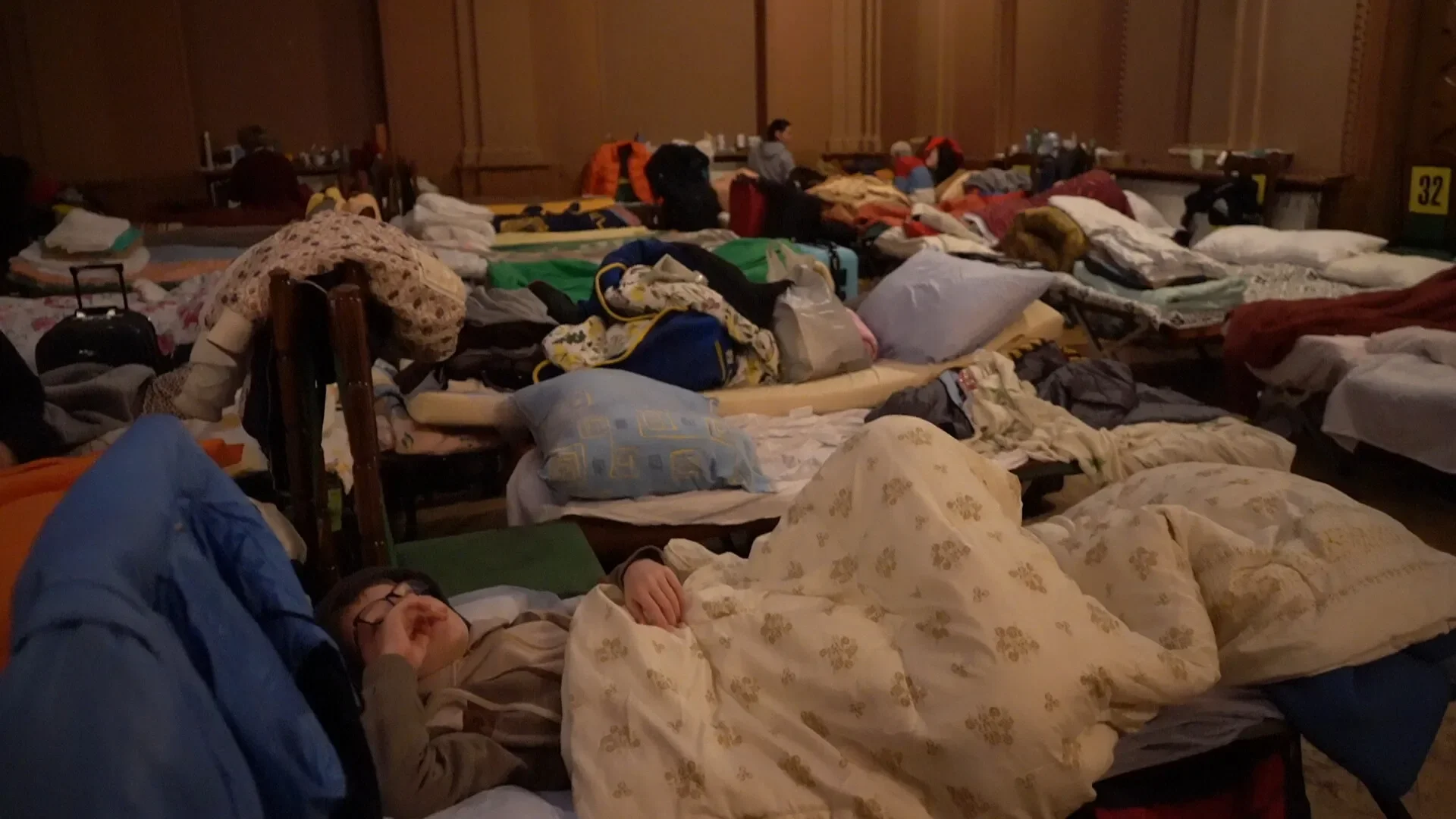At the beginning of the war, hundreds of thousands of Ukrainian refugees came through the train station in Przemyśl, a small historic city near the Ukrainian border. Ukrainian House, a cultural center in the center of town, quickly responded, turning their facility into a temporary accommodation center by rolling bunks into their theater, constructing new bathrooms, and converting their meetings rooms into an impromptu Ukrainian consulate.
“Two or three months ago from 200 to 300 people would come to Przemyśl on a train,” says Igor Horków, the Chairman of Ukrainian House. “Now, there are from five to six hundred people coming on one train, and there are several trains coming from Kyiv, Odessa, and Zaporizhya every day.”




